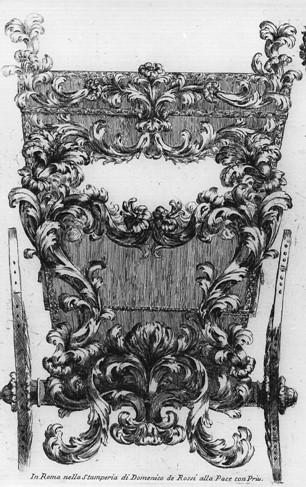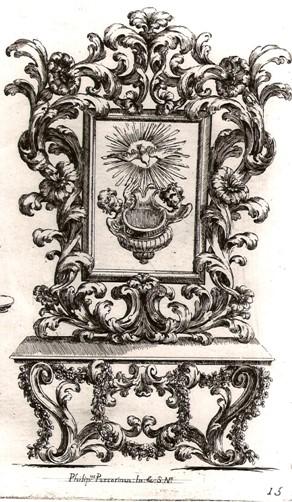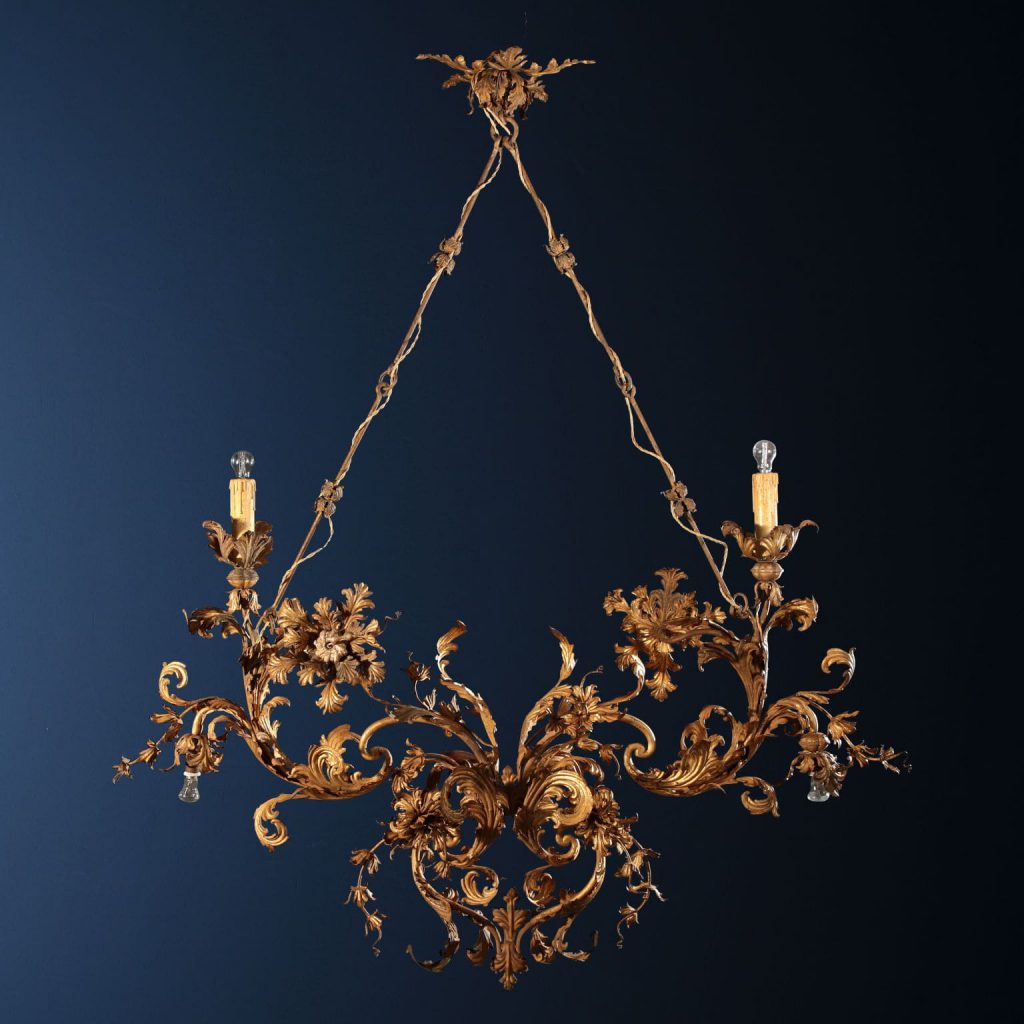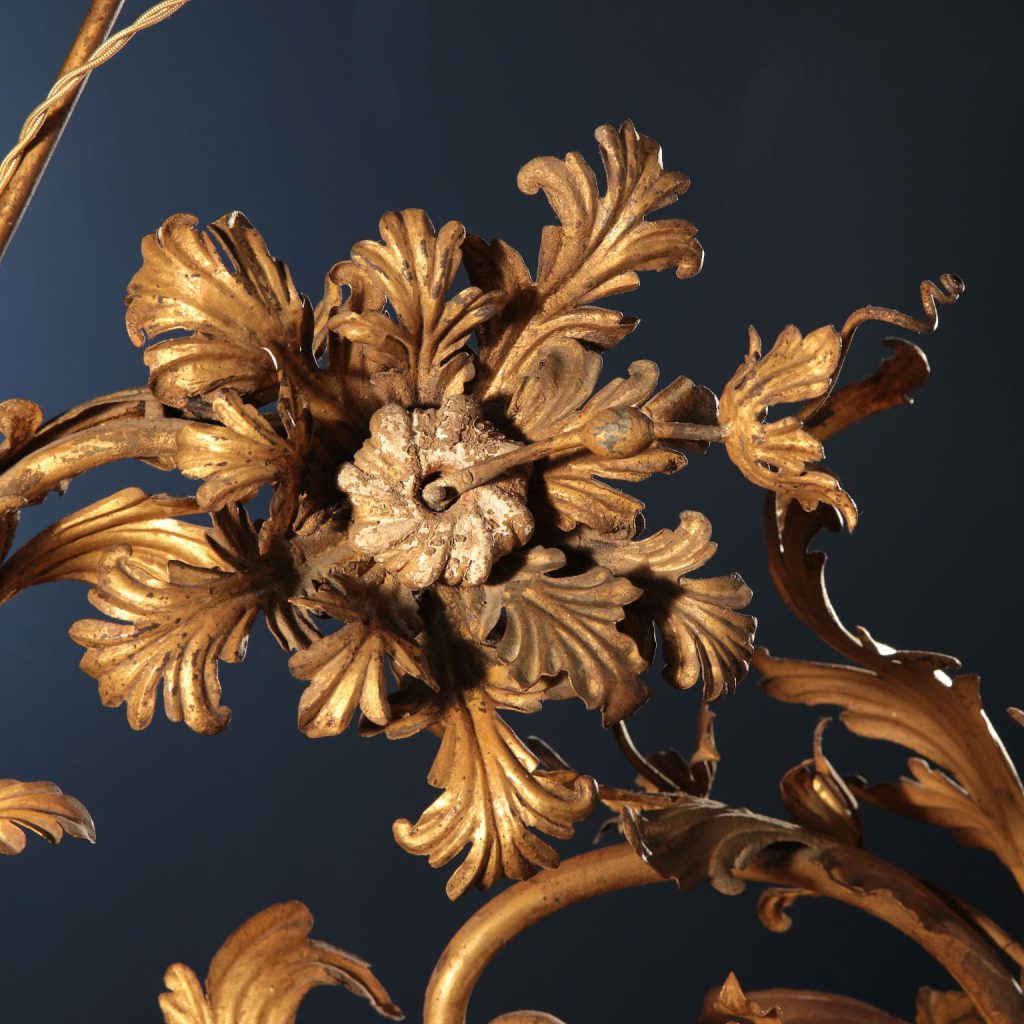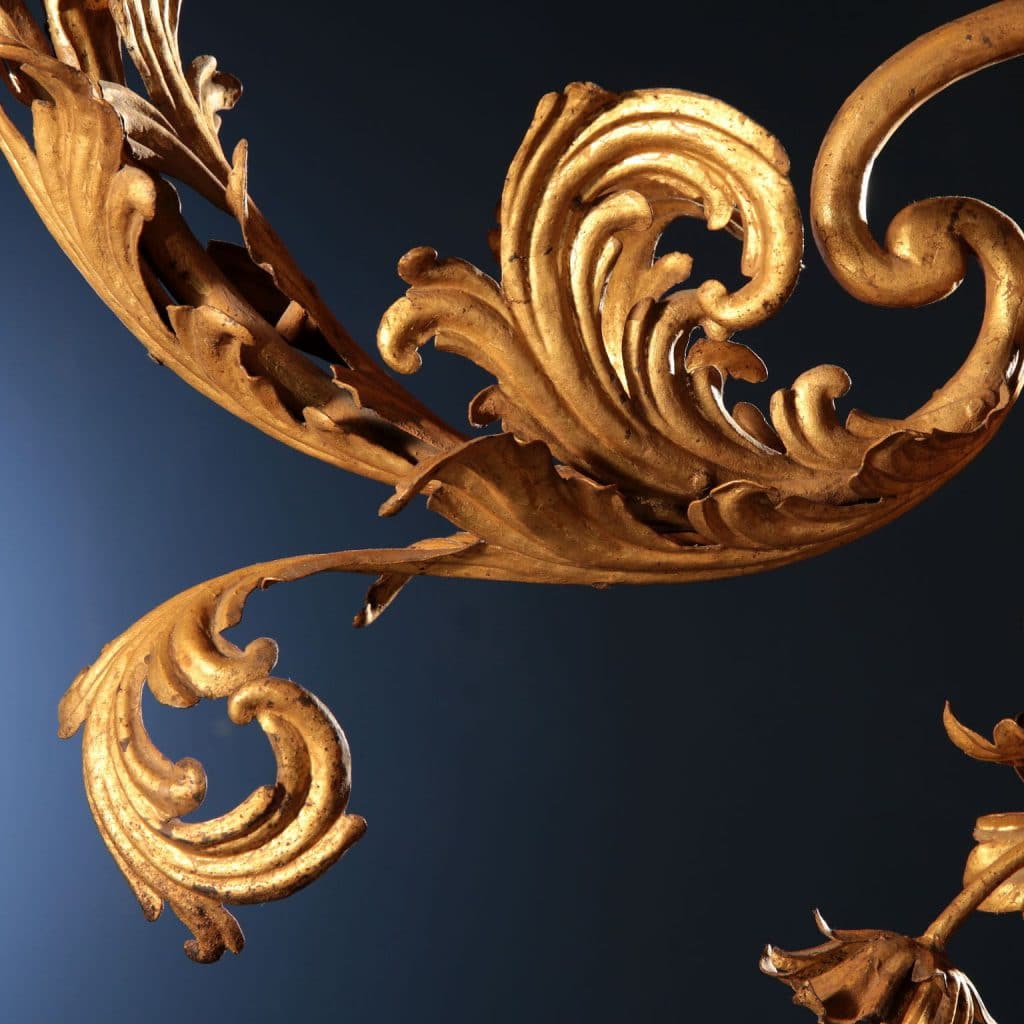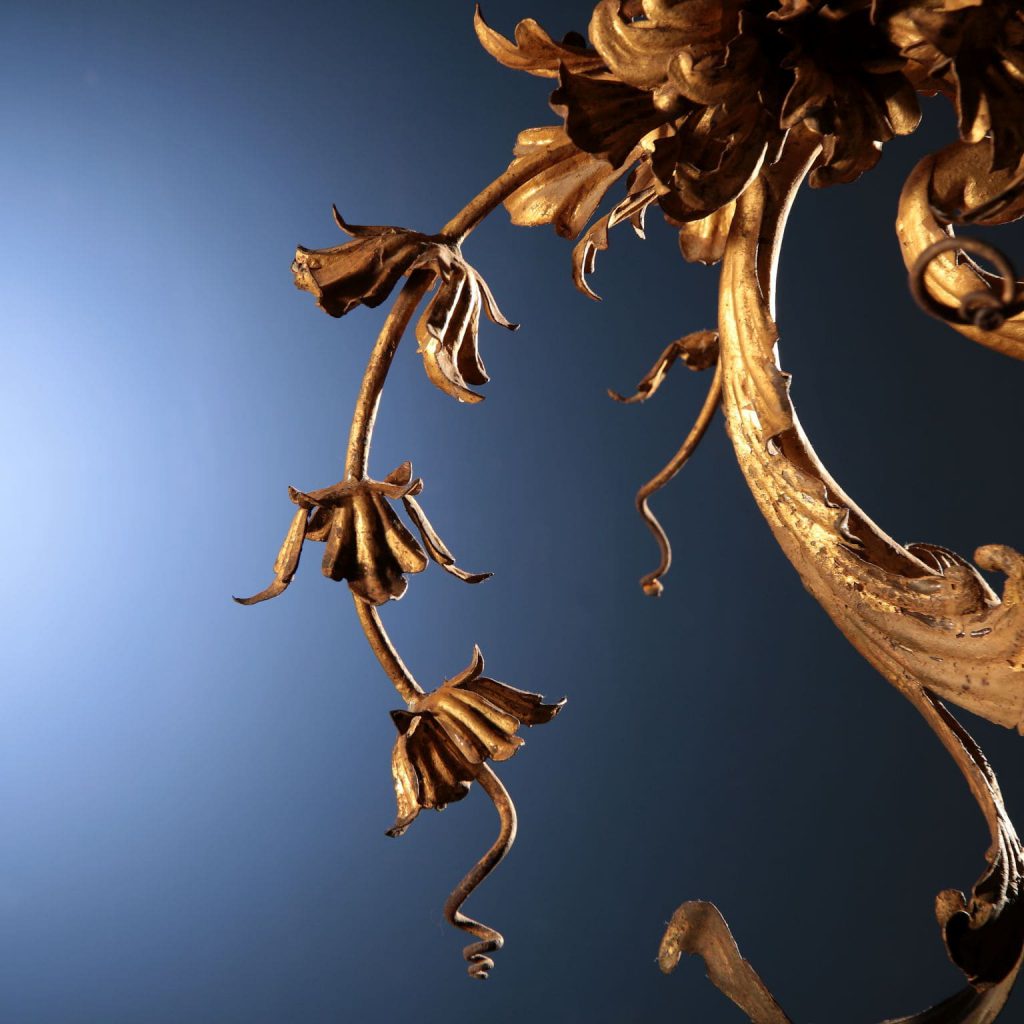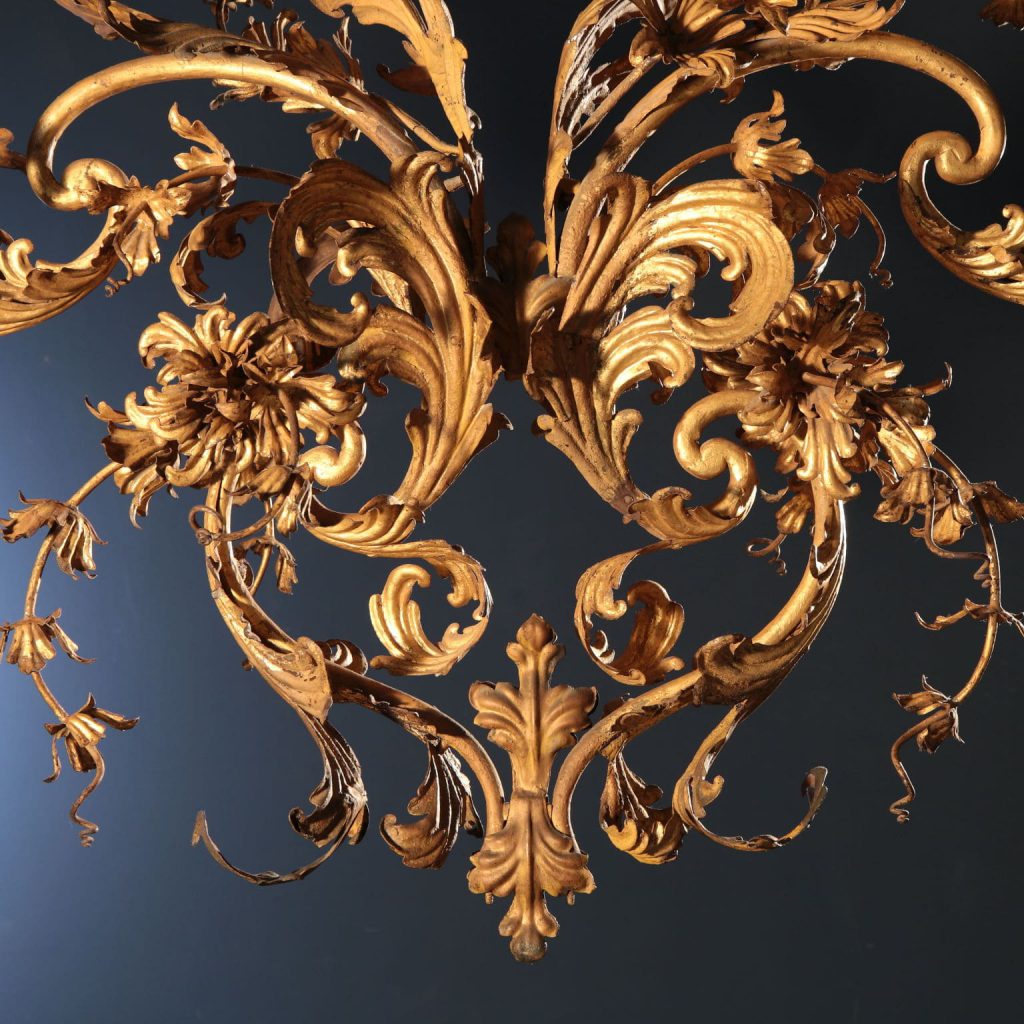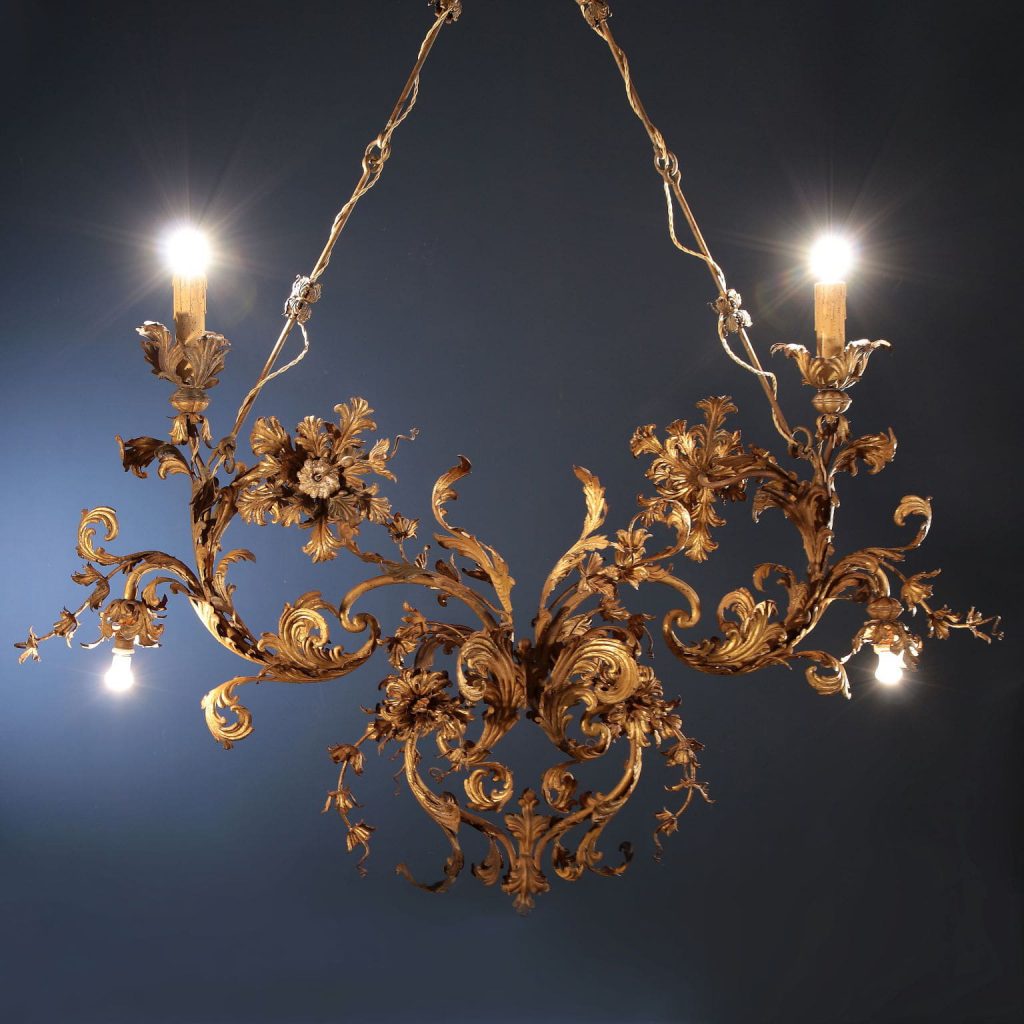Beginning of the 18th century
With parts in iron and wood
Description:
The chandelier was created in the 18th century by combining two large Baroque period wall sconces; they are made of wrought iron, wrought iron sheet and wooden parts, to imitate floral branches, all gilded. From two large wrought iron scrolls, various branches branch off to which, thanks to rivets, the large sheet metal acanthus leaves are grafted.
Some flowers are composed with iron sheet petals whose hearts are made of wood and inserted in the one that represents the pistil; two flowers facing each other act as a candle holder, now electrified. United in the 19th century to form a single chandelier, chained irons were added ending in a tuft of golden leaves where the chandelier hooks to the ceiling.
Dimensions: 234 x 187 x 45 cm ( 92,1 x 73,6 x 17,7 in )
Historical-stylistic analysis:
The handcrafted execution of the chandelier has its roots in the Roman Baroque. In fact, it draws inspiration or at least influence from those prototypes that, mainly Passarini, among the various followers of Bernini created for mirrors, consoles, carriages, beds. Numerous drawings together with the works leave testimony to us. The period is precisely the late Baroque which develops in the first quarter of the 18th century.
Bibliography:
– Alvar Gonzalez-Palacios, Il tempio del gusto, Roma e il Regno delle Due Sicilie, ed. Longanesi 1984
– Filippo Passarini, Nuove invenzioni d’ornamenti d’architettura e d’intagli diversi utili ad argentieri intagliatori ricamatori et altri professori delle buone arti del disegno inventati et intagliati da Filippo Passarini, stampati da Derossi Domenico 169
- Chandelier from the early 18th century

Antiques, Art and Design
FineArt is the new ambitious Di Mano in Mano project that offers an exclusive choice of antiques and design works, presenting them for their singularity and uniqueness.

